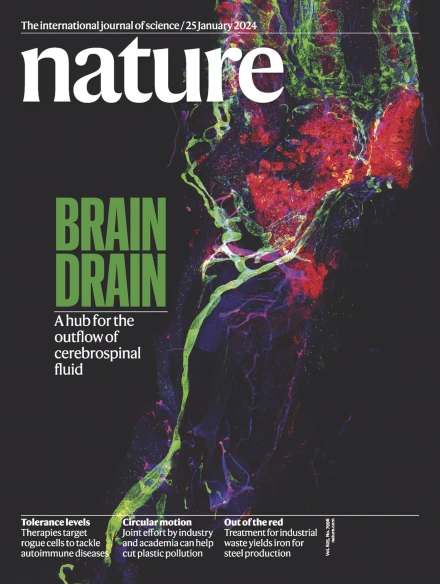静息状态功能磁共振成像的历史与未来
IF 48.5
1区 综合性期刊
Q1 MULTIDISCIPLINARY SCIENCES
引用次数: 0
摘要
自从在人脑中发现静息状态功能连接以来,这种神经成像方法已经彻底改变了神经结构的研究。曾经被认为是噪音的自发低频波动在大规模大脑网络中的功能意义现在已经在25000多份出版物中进行了研究。在这篇综述中,我们提供了静息状态功能MRI (rsfMRI)研究的历史概述和潜在的未来方向的思考,重点介绍了已经开发的最具信息量的分析方法,以揭示大脑的内在时空组织。我们回顾了导致rsfMRI在神经科学中广泛应用的合作努力,重点介绍了电学和生物医学工程、物理学、数学和计算机科学的贡献所带来的方法创新。我们将重点关注该领域进一步发展所必需的关键理论和方法进步,强调需要进一步整合全脑计算建模的新发展,更复杂的大脑行为映射方法,从神经生理学的并发测量中获得更大的机制见解,以及对机器学习应用中泛化失败问题的更大认识。我们认为,当rsfMRI与人口神经科学和精确精神病学服务的全球健康倡议完全整合时,它具有更大的临床相关性的潜力。本文章由计算机程序翻译,如有差异,请以英文原文为准。


The history and future of resting-state functional magnetic resonance imaging
Since the discovery of resting-state functional connectivity in the human brain, this neuroimaging approach has revolutionized the study of neural architecture. Once considered noise, the functional significance of spontaneous low-frequency fluctuations across large-scale brain networks has now been investigated in more than 25,000 publications. In this Review, we provide a historical overview and thoughts regarding potential future directions for resting-state functional MRI (rsfMRI) research, highlighting the most informative analytic approaches that have been developed to reveal the brain’s intrinsic spatiotemporal organization. We review the collaborative efforts that have led to the widespread use of rsfMRI in neuroscience, with an emphasis on methodological innovations that have been made possible by contributions from electrical and biomedical engineering, physics, mathematics and computer science. We focus on key theoretical and methodological advances that will be necessary for further progress in the field, highlighting the need for further integration with new developments in whole-brain computational modelling, more sophisticated approaches to brain–behaviour mapping, greater mechanistic insights from concurrent measurement of neurophysiology, and greater appreciation of the problem of generalization failure in machine learning applications. We propose that rsfMRI has the potential for even greater clinical relevance when it is fully integrated with population neuroscience and global health initiatives in the service of precision psychiatry. This Review provides an overview of the history of resting-state functional MRI research, which has helped to reveal the spatiotemporal organization of the brain, and discusses how it can contribute further to neuroscience research and precision psychiatry.
求助全文
通过发布文献求助,成功后即可免费获取论文全文。
去求助
来源期刊

Nature
综合性期刊-综合性期刊
CiteScore
90.00
自引率
1.20%
发文量
3652
审稿时长
3 months
期刊介绍:
Nature is a prestigious international journal that publishes peer-reviewed research in various scientific and technological fields. The selection of articles is based on criteria such as originality, importance, interdisciplinary relevance, timeliness, accessibility, elegance, and surprising conclusions. In addition to showcasing significant scientific advances, Nature delivers rapid, authoritative, insightful news, and interpretation of current and upcoming trends impacting science, scientists, and the broader public. The journal serves a dual purpose: firstly, to promptly share noteworthy scientific advances and foster discussions among scientists, and secondly, to ensure the swift dissemination of scientific results globally, emphasizing their significance for knowledge, culture, and daily life.
 求助内容:
求助内容: 应助结果提醒方式:
应助结果提醒方式:


